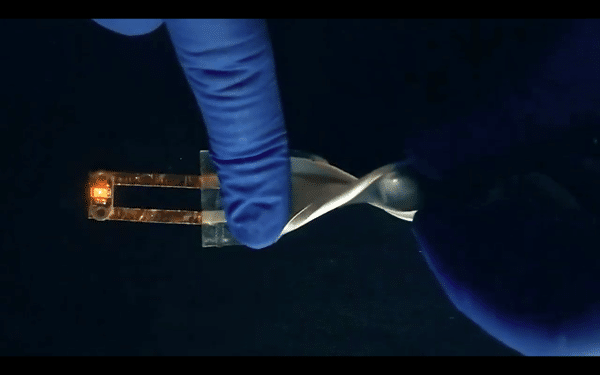Batteries can now be screen-printed onto a polymer film, making them highly flexible, allowing greater freedom in product design and giving them highly competitive properties compared to state of the art lithium-ion batteries.
A team comprising researchers from the University of California San Diego and battery company ZPower developed a silver-oxide-zinc battery with an areal energy density about 5 to 10 times higher than current state of the art lithium-ion solutions. Also, the battery's areal capacity is 10 to 20 times greater than that of typical lithium-ion batteries, hitting 50 milliamps per square centimeter at room temperature, the team claims.
“This kind of areal capacity has never been obtained before,” said Lu Yin, one of the paper's co-authors and a Ph.D. student in UC San Diego's nanoengineering research group headed by Professor Joseph Wang. “And our manufacturing method is affordable and scalable,” Yin added.
By lowering the electric circuit's resistance to alternating current, the team managed to bring down the battery's impedance, leading to the high capacity that was achieved.
“Our batteries can be designed around electronics, instead of electronics needed to be designed around batteries,” Yin said. The researchers envision the battery as a power source that can be used in consumer electronics due to its flexibility and high capacity.
Popular content
Initial trials showed that after 80 cycles, there were no significant signs of capacity loss. When the researchers repeatedly twisted and bent the battery, no damage or performance loss could be observed.

Micro-battery developer ZPower contributed its proprietary cathode design and chemistry to the project. Silver oxide-zinc cathodes offer excellent energy density but suffer electrochemical instability, leading to limited cycle life and lower capacities, the team noted. ZPower addressed the problem by adding a lead oxide coating to the cathode design, which improves electromechanical stability and offers much better conductivity.
Previous attempts at flexible batteries suffered from high production costs, as these had to be processed in a vacuum and completely sterile conditions. Flexible silver oxide chemistries are highly oxidative and prone to chemical degradation. Testing a range of solvents and binders, the California team managed to create an ink formulation containing the silver-oxide cathode, which can be quickly screen printed onto polymer film within seconds. The cathode is dry in a few minutes. The current collector and zinc anode and separators can be screen printed and then stacked onto layers to create the final battery product. According to the researchers, a roll-to-roll screen printing process would be possible to scale up production.
This content is protected by copyright and may not be reused. If you want to cooperate with us and would like to reuse some of our content, please contact: editors@pv-magazine.com.



By submitting this form you agree to pv magazine using your data for the purposes of publishing your comment.
Your personal data will only be disclosed or otherwise transmitted to third parties for the purposes of spam filtering or if this is necessary for technical maintenance of the website. Any other transfer to third parties will not take place unless this is justified on the basis of applicable data protection regulations or if pv magazine is legally obliged to do so.
You may revoke this consent at any time with effect for the future, in which case your personal data will be deleted immediately. Otherwise, your data will be deleted if pv magazine has processed your request or the purpose of data storage is fulfilled.
Further information on data privacy can be found in our Data Protection Policy.